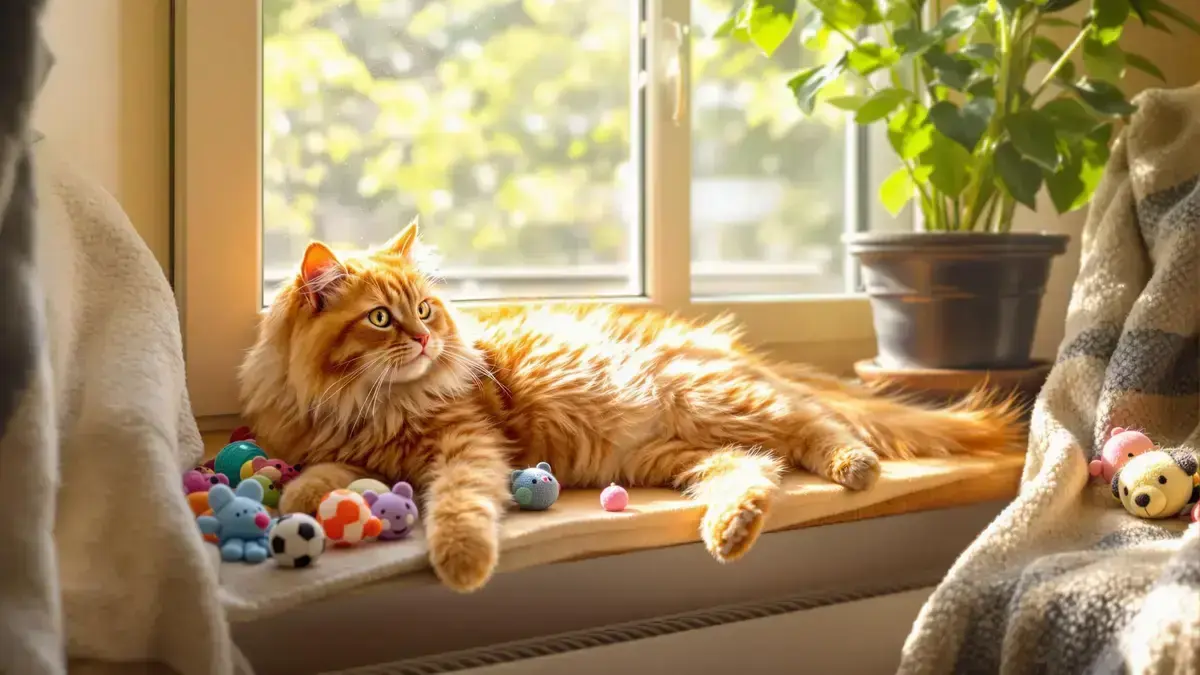Red cats are often surrounded by prejudices that raise many questions about their behavior and character. The orange gene, which is located on the X chromosome, plays a crucial role in the color of their fur, but this connection still raises questions. Paradoxically, female red cats are much rarer, resulting in a disproportionate number that contributes to misconceptions. A thorough analysis of cat behavior shows that solid evidence is lacking.
Essential Information
- Red cats are often associated with biases regarding their warmth and affection.
- The orange gene on the X chromosome affects the color of their fur.
- Female red cats are rare, with a ratio of three male cats to one female.
- The perception that male cats are friendlier is a myth without solid evidence.
Red Cats: Prejudices, Warmth, and Affection
Red cats are often viewed as special beings, surrounded by an aura of mystery and affection. This popular perception gives them a uniqueness that raises questions. People usually approach these animals with expectations based on deeply rooted stereotypes. Nevertheless, behind this image lies a more nuanced reality, as science begins to separate fact from fiction regarding red cats.
Orange Gene on the X Chromosome: Influence on Fur Color
The color of a cat’s fur is primarily determined by genes, particularly the orange gene located on the X chromosome. This genetic specificity is crucial in understanding why red cats are often male. In fact, this gene causes pigments to be produced that give the fur its characteristic hue. Genetics thus plays a key role in the distribution of color, which significantly influences their population and distribution.
Female Red Cats Are Rare: Three Male Cats for Each Female
It is striking that female red cats are significantly rarer than their male counterparts, with a ratio of three male cats for every female. This rarity of female red cats further contributes to their image as special creatures. It raises questions about the dynamics of reproduction and its impact on social and individual behaviors within cat populations.
Perception of Male Cats as Friendlier: Persistent Myth
Another common myth suggests that male red cats are friendlier than others. However, this popular perception seems to lack a solid basis. Studies on cat behavior have not provided compelling evidence for this tendency. This raises doubts about the reliability of anecdotal observations that tend to reinforce excessive stereotypes regarding red cats.
Studies of Cat Behavior: No Solid Evidence
Research conducted thus far regarding cat behavior, especially concerning red cats, indicates that there are no direct links between fur color and personality. Each cat is an individual and can exhibit a variety of behaviors, regardless of the color of their fur. These results demonstrate that belonging to a certain color should not automatically imply predictable behavior.
2015 Study: Association Between Color and Personality, Unclear Results
A study from 2015 attempted to establish a connection between fur color and cat personality, but the results were unclear. These findings highlight the difficulty of generalizing behavior based on color and encourage pet owners to view each cat, regardless of color, as an individual with its own characteristics and preferences, far removed from the stereotypes attached to their fur.
Link Between Fur Color and Temperament: A Topic of Ongoing Research
The hypothetical link between fur color and temperament remains a subject of active research. Many studies still need to be conducted to clarify the potential effects that color may have on cat behavior. Experts agree that it is essential to approach this topic with caution so that future cat owners do not fall victim to misconceptions.
Additional Research Needed to Clarify Behavior
As studies continue to evolve, the understanding of cat behavior, and particularly of red cats, must be based on solid data rather than myths. Further research is crucial not only to clarify the behavior of cats in general but also to delve deeper into the specifics that may distinguish red cats from others. For the sake of public education, science must continue to shed light on the reality behind these fascinating cats.

